Water butts
Installing a water butt in your garden lets you water your garden for free. Each water butt can hold up to 200 litres of water for you to use on your plants.
During heavy rain, local sewer networks can struggle to cope with the amount of water entering pipes and storage tanks. When they fill up, we use pressure relief valves built into the network to stop homes and businesses from flooding. These are known as storm overflows.
Storm overflows are part of the design of the sewers and are regulated by the Environment Agency. They're used in areas where the sewers were built to carry both wastewater and rainwater.
Storm overflows release excess water during periods of rain through outfalls into rivers and the sea. This is to prevent the sewerage system from becoming overwhelmed, which can lead to flooding and excess water backing up into homes and businesses.
These storm water overflow releases are typically heavily diluted with rainwater. In most cases, they are consented releases, permitted by the Environment Agency.

Groundwater is the water found underground in the cracks and spaces in soil, sand and rock. Groundwater infiltration is when water from the ground squeezes its way into the system through underground public or private pipework. If the system is filled with groundwater then there is less space for rain and wastewater, so the sewer system is more likely to become overwhelmed when it rains. This can result in storm overflow releases.
The Environment Agency requires all wastewater companies to submit plans for managing groundwater infiltration in certain areas. We're transparent about the steps we're taking to reduce it and regularly publish our approved Infiltration Reduction Plans (IRPs).

There's a legal right to connect to the sewerage system, but no stipulations to say you must connect correctly.
Misconnections can happen when wastewater and rainwater coming from a property are connected to the wrong type of sewer.
Misconnections in private pipework can increase the amount of surface water entering the network which can contribute to it becoming overwhelmed.

Things like the size of the area and the complexity of its drainage and sewer systems can affect drainage time. Some areas can take days to fully drain after rainfall.

An equipment malfunction, site or network issue such as a blockage caused by wet wipes could result in a dry spill.
Blockages of non-flushable items can cause many issues. They can reduce the capacity of the sewer network, leading to a build up of surface water or flooding from the network.

We're fully transparent about dry spills and every release is reported to the Environment Agency.
The Clean Rivers and Seas Task Force is working to tackle and minimise the risk factors.
We've also secured £35 million in funding to undertake multiple projects including improvements to our sites and networks. New digital sewer level monitors are also helping us identify problems before they become an issue. These improvements mean that, in future, we aim to put an end to dry spills.
Broadly speaking, there are four main ways to reduce storm overflows:
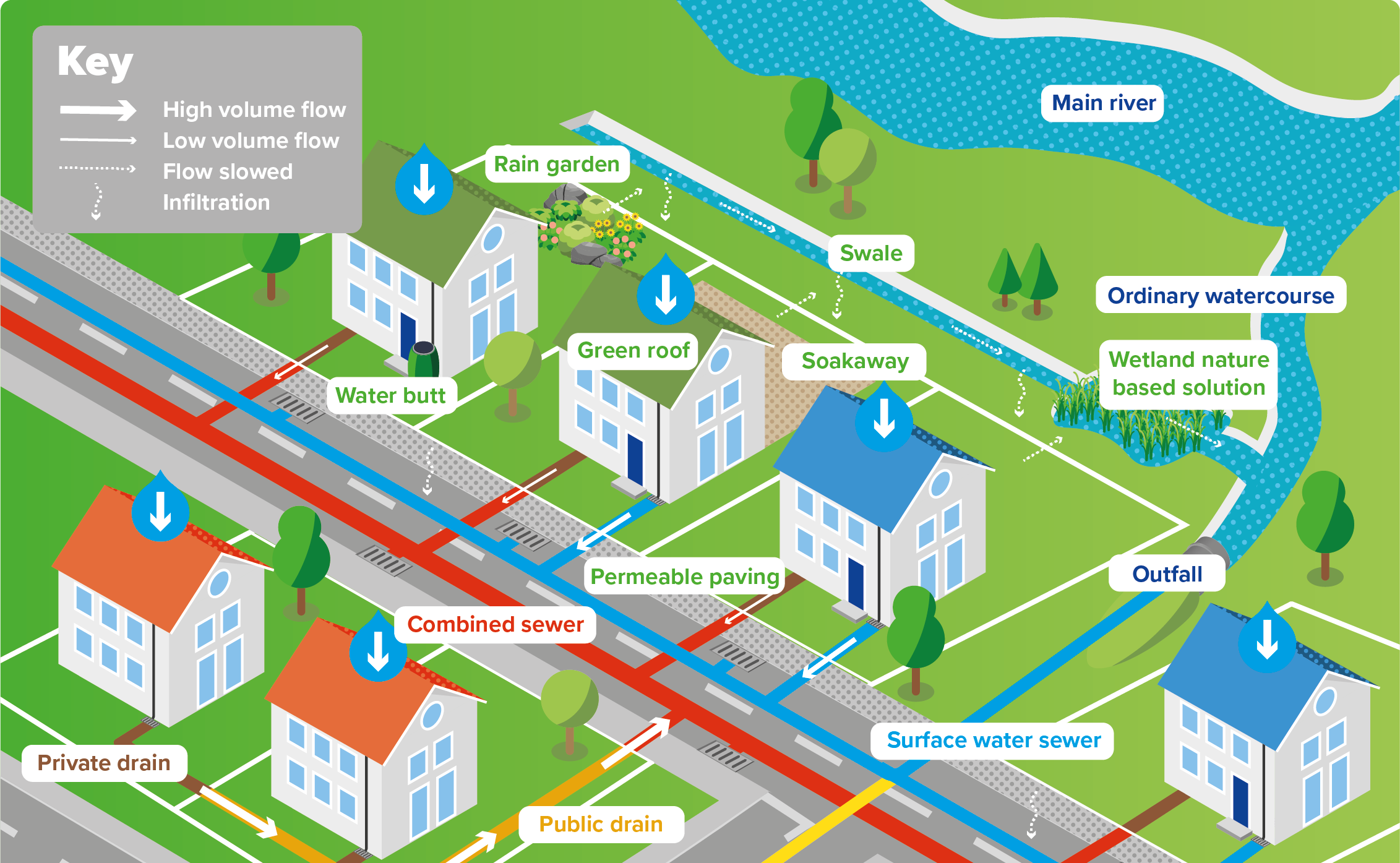
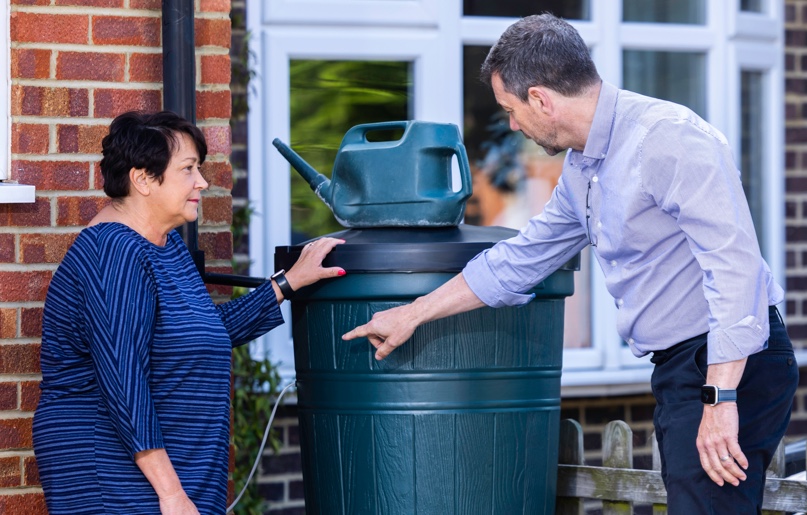
Installing a water butt in your garden lets you water your garden for free. Each water butt can hold up to 200 litres of water for you to use on your plants.
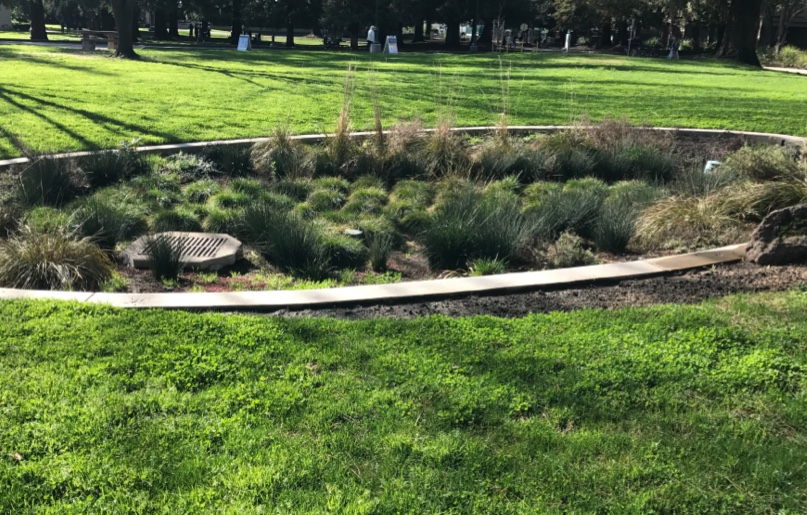
You can create rain gardens using shallow dips in the ground, with plants that can withstand lots of water. When it rains, the run-off collects in the garden before draining.
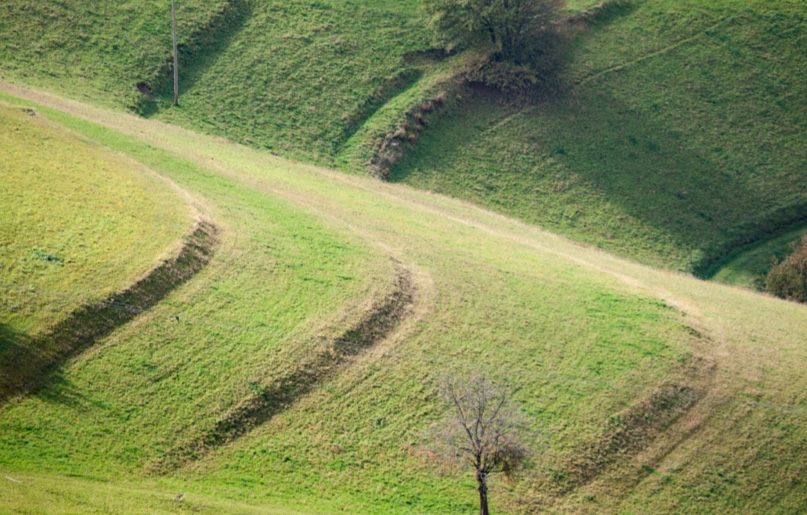
Swales are shallow sloped channels in the ground where run-off can collect before soaking into the ground.
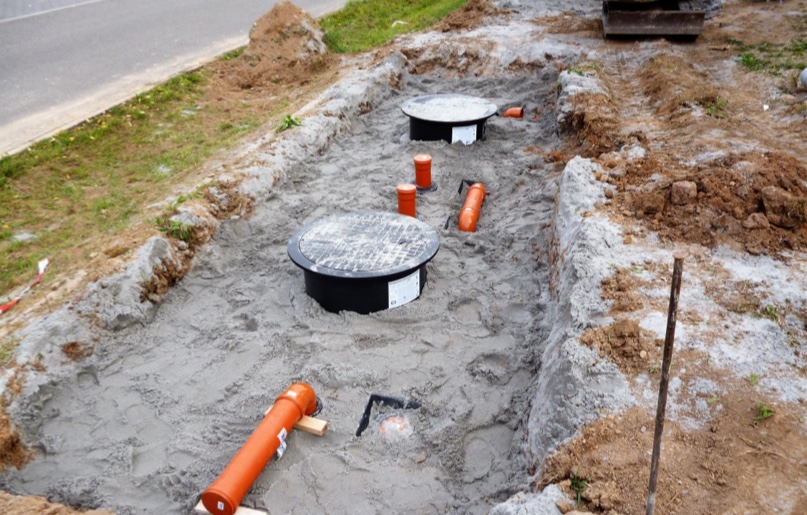
A soakaway is a pit filled with rubble or other hard material. These can be installed close to properties to collect excess surface water run-off, allowing it to slowly soak into the ground.
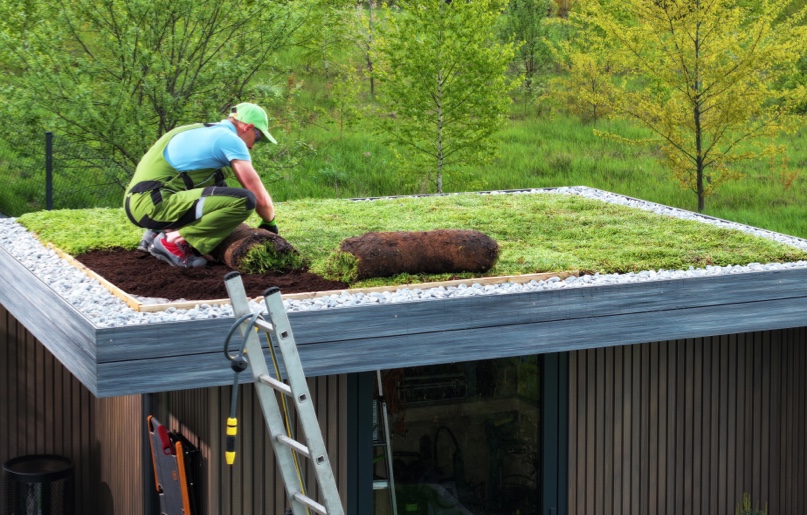
A green roof is a roof that is either partially or completely covered with plants such as moss. These can help to reduce the amount of surface water run-off.
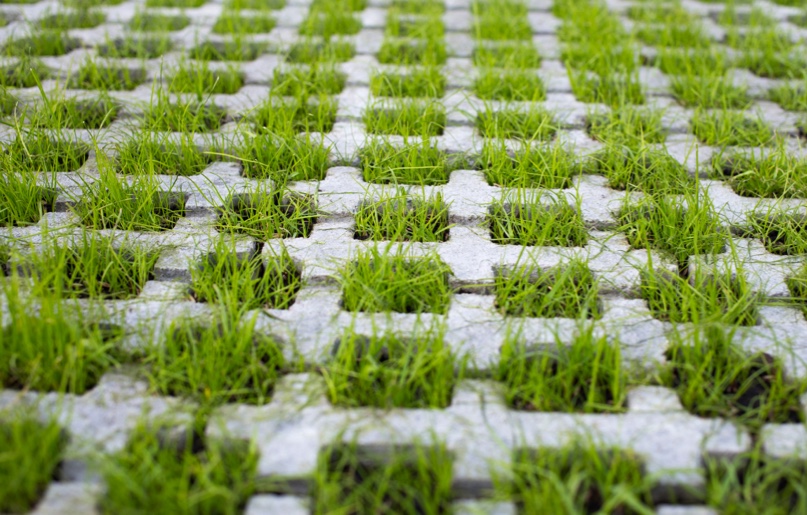
Permeable paving is a type of paving (often created with gaps or a porous material) that allows rainwater to drain more easily from paved areas.
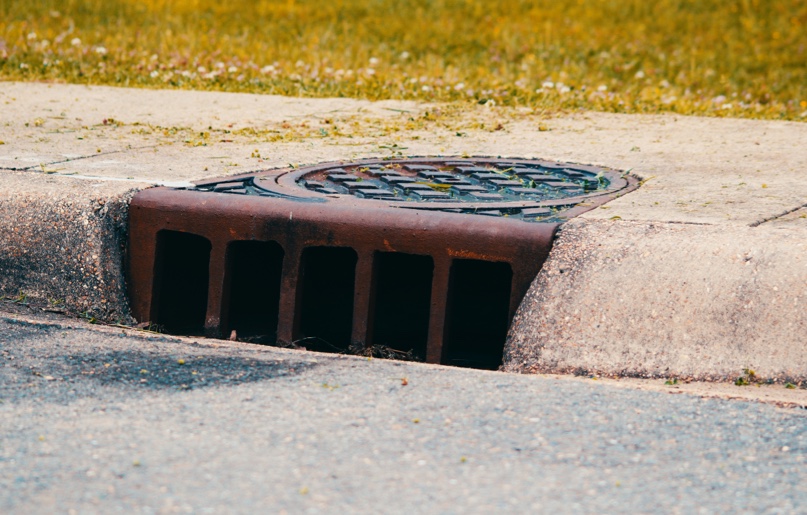
A combined sewer is one that carries both foul and surface water.
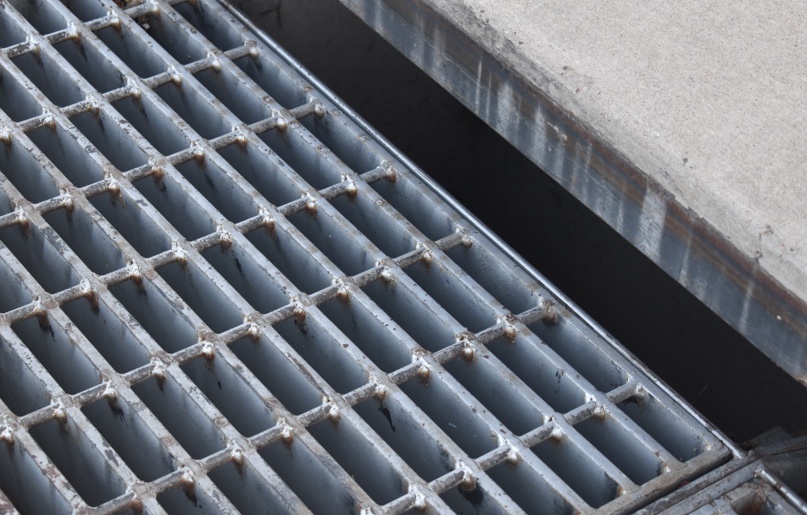
A surface water sewer only carries run-off from roofs and paved areas.
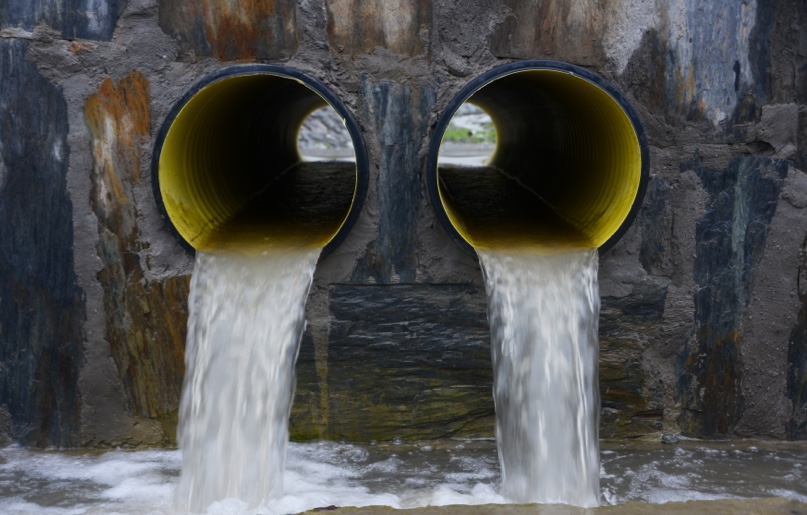
An outfall is a place where water is discharged into a drainage channel or watercourse such as a river or the sea.
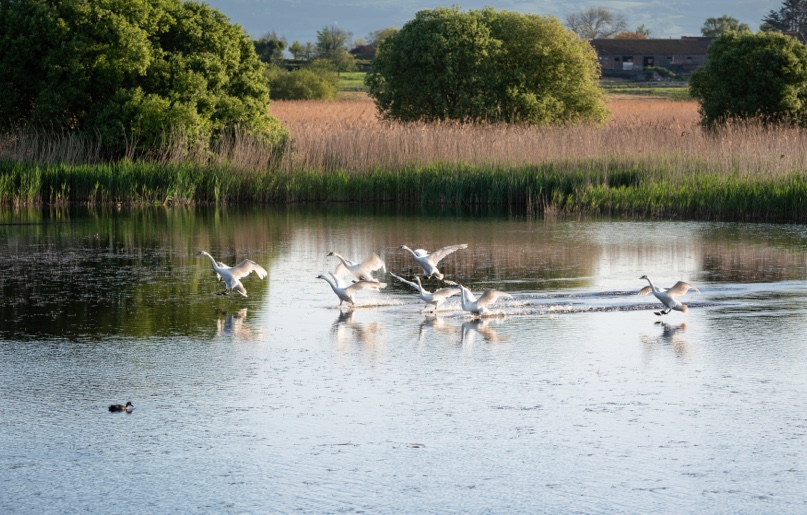
Natural wetland areas can collect run-off and protect communities from flooding.

An ordinary watercourse is any watercourse other than a main river, such as streams, ditches and drains.

Installing a water butt in your garden lets you water your garden for free. Each water butt can hold up to 200 litres of water for you to use on your plants.

You can create rain gardens using shallow dips in the ground, with plants that can withstand lots of water. When it rains, the run-off collects in the garden before draining.

Swales are shallow sloped channels in the ground where run-off can collect before soaking into the ground.

A soakaway is a pit filled with rubble or other hard material. These can be installed close to properties to collect excess surface water run-off, allowing it to slowly soak into the ground.

A green roof is a roof that is either partially or completely covered with plants such as moss. These can help to reduce the amount of surface water run-off.

Permeable paving is a type of paving (often created with gaps or a porous material) that allows rainwater to drain more easily from paved areas.

A combined sewer is one that carries both foul and surface water.

A surface water sewer only carries run-off from roofs and paved areas.

An outfall is a place where water is discharged into a drainage channel or watercourse such as a river or the sea.

Natural wetland areas can collect run-off and protect communities from flooding.

An ordinary watercourse is any watercourse other than a main river, such as streams, ditches and drains.
There are around 15,000 storm overflows in England and approximately 1,000 in our region. How often they release into rivers and seas varies widely. This can range from infrequent (less than 10 spills per annum) to frequent (greater than 100 spills per annum).
We have sensors and alarms installed on 98% of our storm overflow sites which alert us to any activity, and this will be 100% by 2025.
Our interactive map Beachbuoy shows near real-time storm overflow activity in our coastal areas. Beachbuoy can tell you if a release may affect bathing waters and you can subscribe for notifications about releases in specific areas.
Our Beachbuoy release table also records both current and historical storm overflow activity. As well as this, we publish our flows and spills data annually.
A storm overflow is permitted by the regulator and occurs when the system becomes overwhelmed with excess water.
In rare incidences, an emergency overflow is triggered when there has been a technical fault or a blockage in the system. Beachbuoy shows both storm and emergency overflows in our coastal areas.
During heavy or prolonged rainfall, the network would become overwhelmed in several areas – or catchments as we call them. With nowhere for the wastewater to go, it would back up into people's homes and onto roads. This would cause major flooding and pollution for the community.
The Department of Environment, Food and Rural Affairs (Defra) published its Storm Overflows Discharge Reduction Plan in August 2022. This sets the target for the water industry to eliminate storm overflows by 2050 (except for unusually heavy rainfall).
We welcome this plan and are already leading the way with some of the targets outlined. For example, where other water companies are aiming to hit the average number of spills per outfall per year by 2025, we're already doing this.
We’re confident that we’ll not only meet Government targets but that we’ll likely exceed them.
Although storm releases are heavily diluted, they can impact water quality. The impact of a storm release can vary based on the location of the release, the amount released, how long it was released for, and the tides when discharged.
Each outfall/permit is designed to consider the dilution factor, sensitivity, and amenity of the watercourse. We alert local authorities when there is a release.
Although storm overflows can have an impact on water quality, there are many other contributing factors including agricultural run-off, seabird and animal matter and marine activity.
Because of these other factors, Southern Water can’t advise about water quality and whether it’s safe to swim. We can only make predictions about water quality impact caused by storm overflow releases and report them on Beachbuoy. The decision to close a beach is made by the local authority.
We haven’t paid any external dividends to our shareholders since 2017 to ensure we’re investing as much as possible in our network. When we’ve received fines, these have been paid to the Treasury from our shareholders; no customer money is used to pay any fines due.
Further to this, customer bills have been discounted below the market rate for several years due to poor past performance. We understand the burden the rising cost of living is having on our customers and as such we have a range of support options. These include maintaining our social tariff discount at 45% and more than doubling the extent of our support, increasing the value of our Hardship Fund from £250,000 annually to £1.25 million.
We are. Since privatisation, £10 billion has been spent to increase the volume of wastewater that is fully treated before being release back into the environment (previously only approximately 50% treated to around 95% today). This has helped improve the quality of our bathing waters from only 28% meeting public health standards pre-privatisation, to 88% now rated as ‘good’ or ‘excellent’. The 5% that's released is usually during heavy or prolonged rainfall and is heavily diluted with rainwater. We’re working hard to reduce that figure.
The system that contains both wastewater from homes and businesses, and rainwater from roofs, gardens and roads.
A pressure release valve that sends excess wastewater to outfalls during a heavy rain event.
Pipes that spill excess wastewater into rivers and seas.
The excess stormwater that is diverted into rivers or the sea.
Our near real-time storm overflow map and reporting system.
An area where we're trialling solutions to slow the flow of rainwater
An independent regulator that monitors our storm overflow activity and provides the permits to allow storm releases under strict conditions.
Solutions such as ponds, tree pits, wetlands, rain gardens. These solutions focus on greening spaces that also benefit the local community and wildlife.